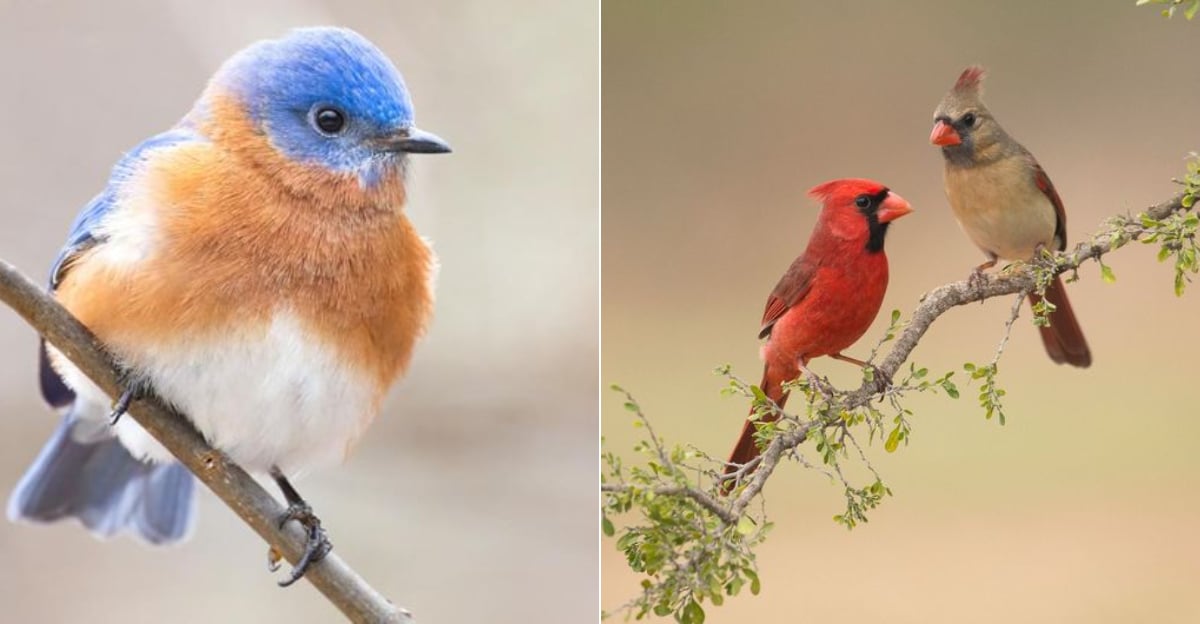Here’s the truth: Florida’s diverse ecosystems are a paradise for bird watchers and backyard nature enthusiasts alike!
I don’t even know where to begin—from stunning cardinals to majestic hawks. The Sunshine State hosts an impressive variety of feathered visitors throughout the year.
Are you a seasoned birder? Or do you just enjoy watching wildlife from your porch? I’ve got you covered!
With these tiny chirping beauties, you’ll learn to identify common backyard birds in Florida in a heartbeat—and it will definitely deepen your appreciation of natural beauty.
1. Northern Cardinal
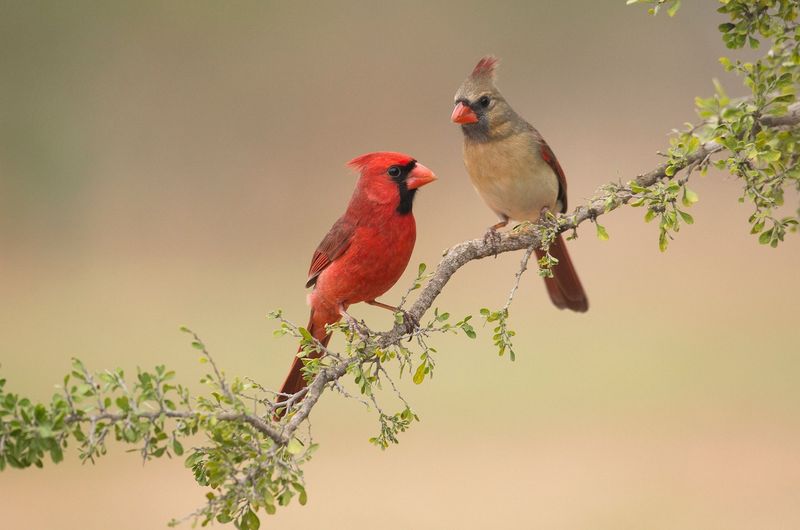
The unmistakable bright red plumage of male Northern Cardinals makes them the rock stars of any Florida backyard.
These year-round residents love to visit bird feeders stocked with sunflower seeds, often being the first to arrive in the morning and the last to leave at dusk.
Their distinctive crest and black face mask are key identification features.
Listen for their clear songs that sound like “purty-purty-purty” or “cheer-cheer-cheer.” And hey, did you know they’re among the few female birds that sing along with males?
2. Blue Jay
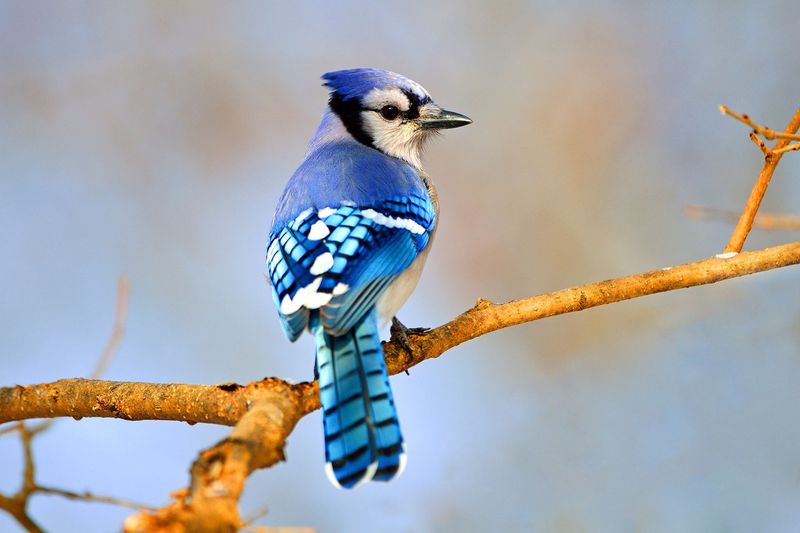
Blue Jays bring both beauty and drama to Florida backyards with their loud, raucous calls. These intelligent birds belong to the crow family and aren’t shy about announcing their presence with various squeaks, rattles, and even perfect mimicry of hawks.
Blue Jays are notorious for their bossy behavior at feeders, often scaring away smaller birds to claim the best seeds.
They particularly love peanuts, acorns, and sunflower seeds, which they’ll sometimes cache for later consumption.
3. American Robin
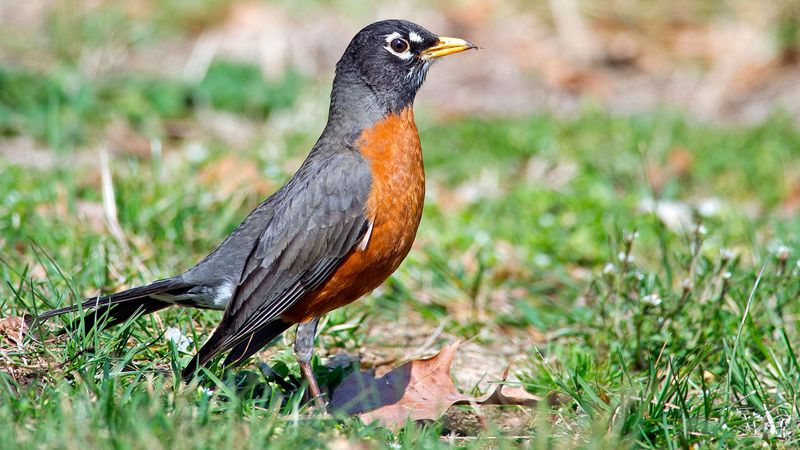
Unlike northern states where they’re migratory, many robins live in Florida year-round, especially in central and northern regions.
These birds prefer hunting for earthworms on lawns after rain, pulling them from the ground with remarkable precision. You’ll often spot them hopping across grass, stopping abruptly to listen for worm movement below the surface.
Identification is straightforward – look for the warm reddish breast, gray-brown back, and white eye ring. Juveniles have speckled breasts until they develop their adult plumage.
4. Mourning Dove
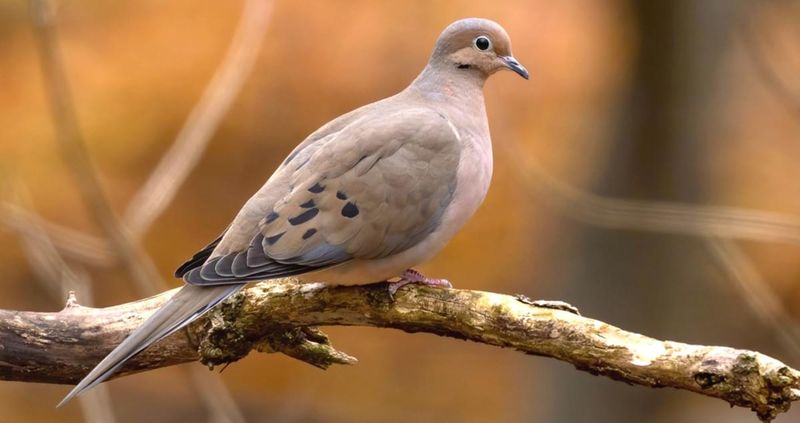
The gentle cooing of Mourning Doves creates a peaceful soundtrack in Florida backyards from dawn till dusk.
These plump, tan-colored birds with small heads and long, pointed tails are common visitors to ground feeders and birdbaths across the state.
When taking flight, their wings make a distinctive whistling sound that helps with identification.
Mourning Doves mate for life and often nest in the same areas year after year.
Their simple nests might appear in your shrubs or low tree branches, where both parents take turns incubating their eggs.
5. Red-Bellied Woodpecker
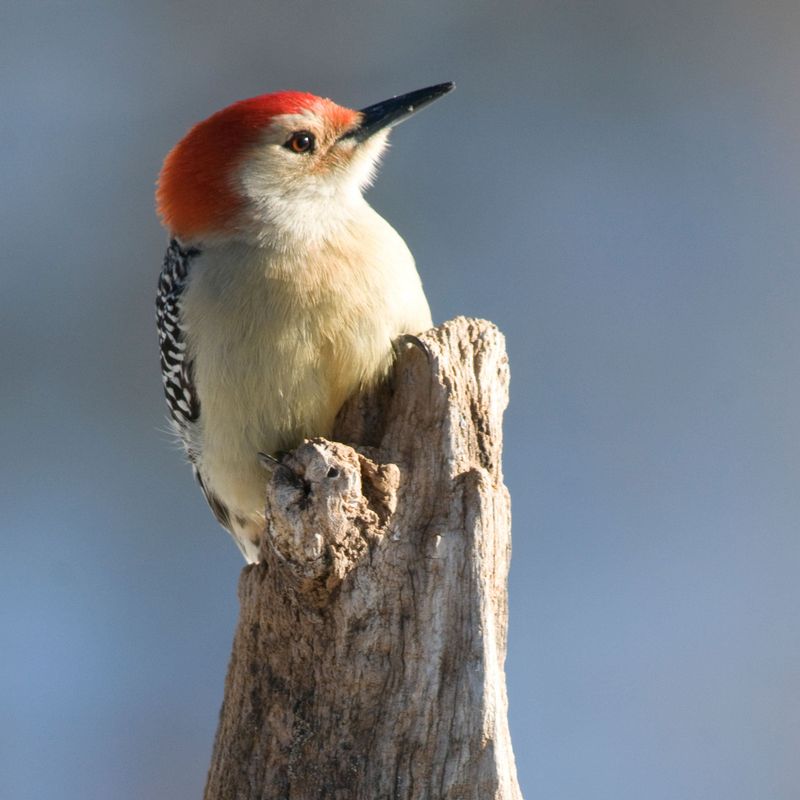
The most noticeable feature of Red-bellied Woodpeckers isn’t their subtle pinkish belly but rather the striking red cap extending from their nape to crown.
Males display more extensive red plumage that covers the entire top of their heads, while females have red only on the nape with a gray crown. Their zebra-patterned backs create a distinctive black-and-white barred effect that’s easy to spot as they climb tree trunks.
These birds readily visit suet feeders and will even eat from seed trays.
6. Northern Mockingbird
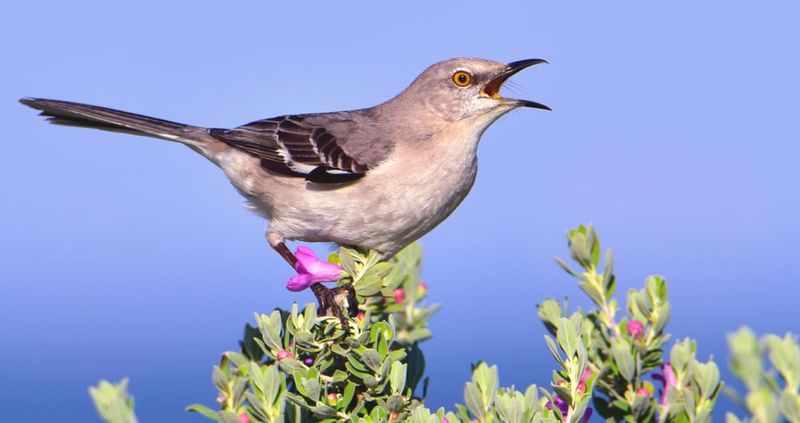
This legendary bird deserves its special status with an incredible vocal repertoire that can include over 200 distinct songs and sounds. Just wow!
Northern Mockingbirds mimic everything from other birds to car alarms and squeaky gates.
These medium-sized gray birds flash white wing patches when they fly, making identification easier. Their slender bodies, long tails, and slightly curved bills are characteristic features to watch for in your yard.
Mockingbirds will boldly defend their space against much larger animals – including humans who venture too close to their nests.
7. Eastern Bluebird
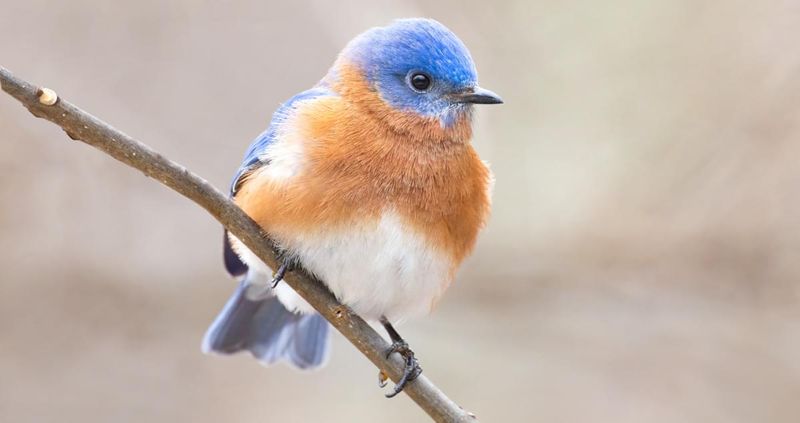
These cavity-nesting birds have made a remarkable comeback after population declines in the mid-20th century. They readily accept properly designed nest boxes, making them perfect backyard residents if you provide appropriate housing.
Watch for their habit of perching on wires, posts, or low branches while scanning the ground for insects. Their soft, warbling song is a pleasant addition to any Florida morning, especially in more rural or suburban settings.
8. Tufted Titmouse

With their silvery-gray upperparts, white belly, and rusty flanks, these active little birds bring charm and personality to any feeding station.
Listen for their clear, whistled “peter-peter-peter” calls that carry surprisingly far for such a small bird. Titmice are notorious for taking one seed at a time from feeders, flying to a nearby perch to crack it open, then returning for more.
These birds form small family groups that stay together through winter, often joining mixed-species feeding flocks.
Their preference for black oil sunflower seeds makes them easy to attract to tube or platform feeders.
9. Carolina Wren
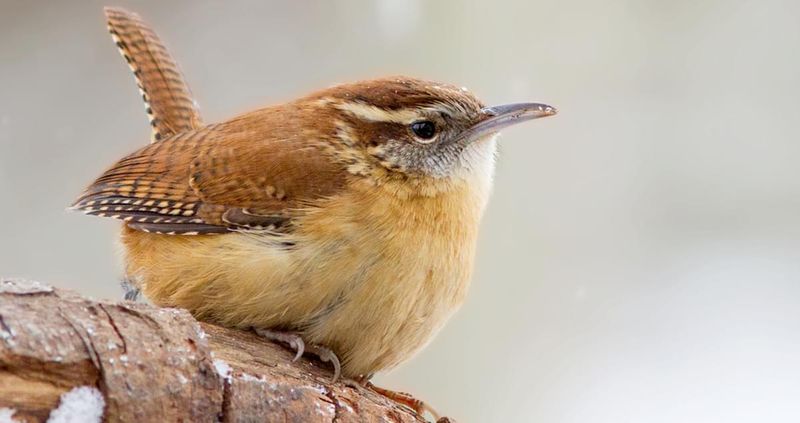
Small but mighty, the Carolina Wren packs an astonishingly loud voice into its compact body. These chunky little birds with upturned tails and bold white eyebrows are year-round Florida residents.
Carolina Wrens build their nests in the strangest places – from old boots to mailboxes to flower pots. They’re primarily insectivorous but will visit suet feeders, especially during cooler months.
Watch for their habit of hopping rather than walking as they explore every nook and cranny of your yard. Despite their bold singing, these birds can be surprisingly secretive, often staying close to dense vegetation or brush piles.
10. Red-Shouldered Hawk
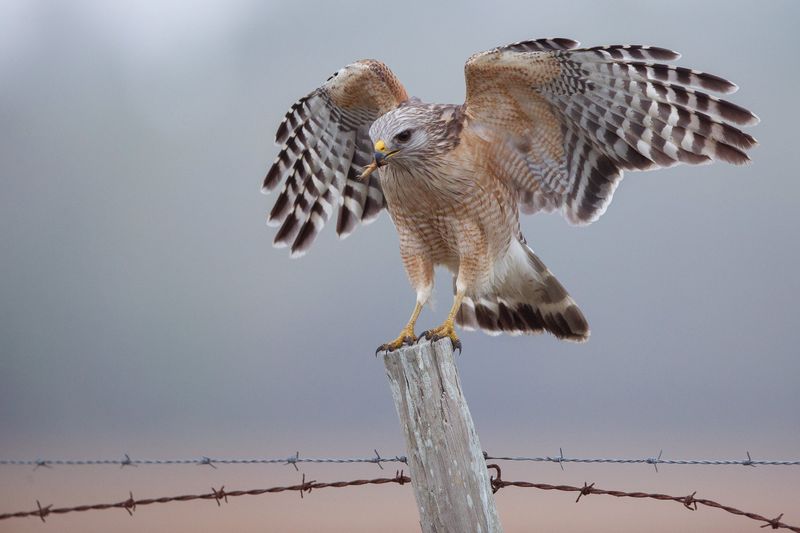
Florida’s subspecies of these birds tends to be lighter-colored than their northern counterparts, with more pale areas in their plumage. They hunt from perches along waterways and wooded edges, watching for small mammals, frogs, and snakes.
Unlike some raptors, Red-shouldered Hawks adapt well to suburban environments, sometimes nesting surprisingly close to human activity.
Their presence helps control rodent populations, making them valuable neighbors despite occasionally alarming smaller backyard birds.
11. Eastern Towhee
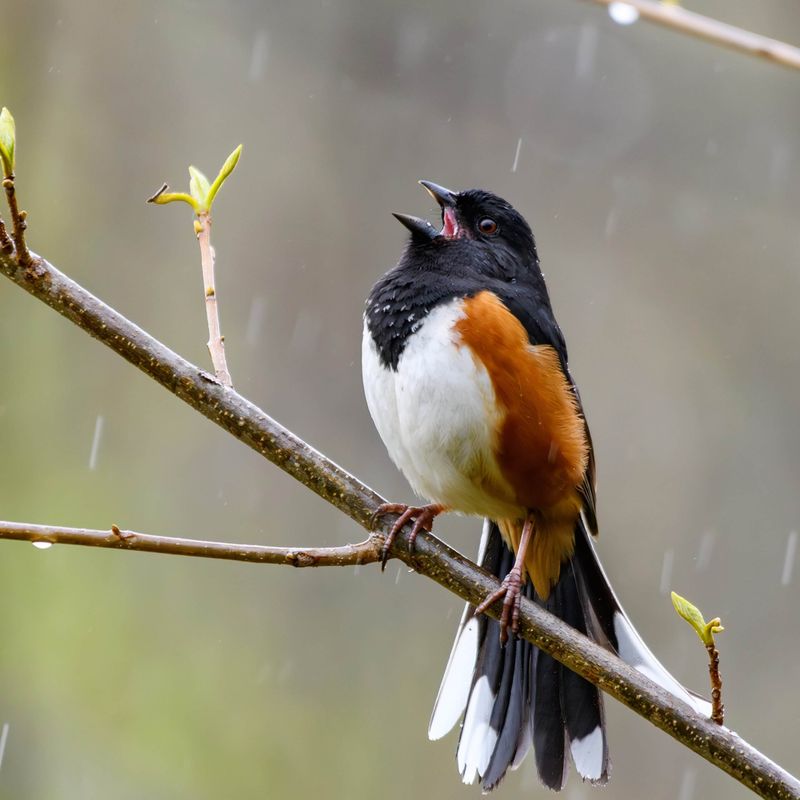
These striking birds combine bold black (male) or rich brown (female) upper parts with rusty flanks and white bellies, creating a tricolored effect that stands out even in dense undergrowth.
Their characteristic foraging behavior involves an energetic two-footed backward scratch in leaf litter, often making noise disproportionate to their size.
Listen for their distinctive “drink-your-teaaa” song or sharp “chewink” call that gave them their former name.
Eastern Towhees prefer yards with natural areas, shrubby borders, and undisturbed leaf litter where they can find insects and seeds. They’re more often heard than seen due to their preference for dense cover.
12. House Sparrow
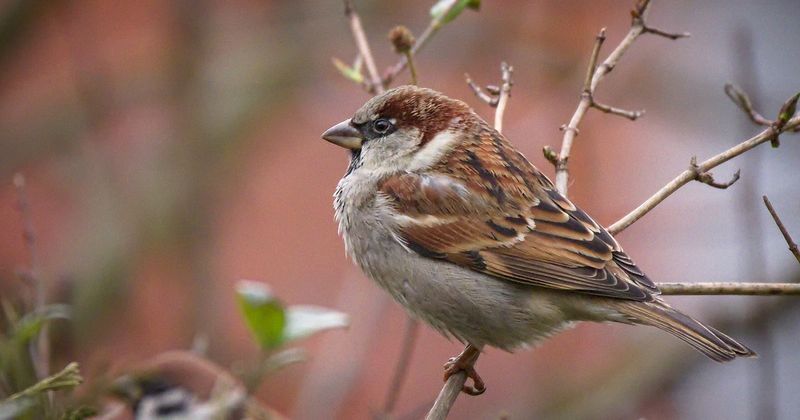
These highly adaptable birds thrive around human habitation, nesting in building crevices, birdhouses, and even store signs. Their constant chirping creates the backdrop soundtrack in many Florida parking lots, outdoor cafes, and neighborhoods.
House Sparrows can be aggressive competitors at feeders, sometimes displacing native species. They particularly love millet and bread crumbs but will eat almost anything available, including insects, seeds, and human food scraps.
13. Carolina Chickadee
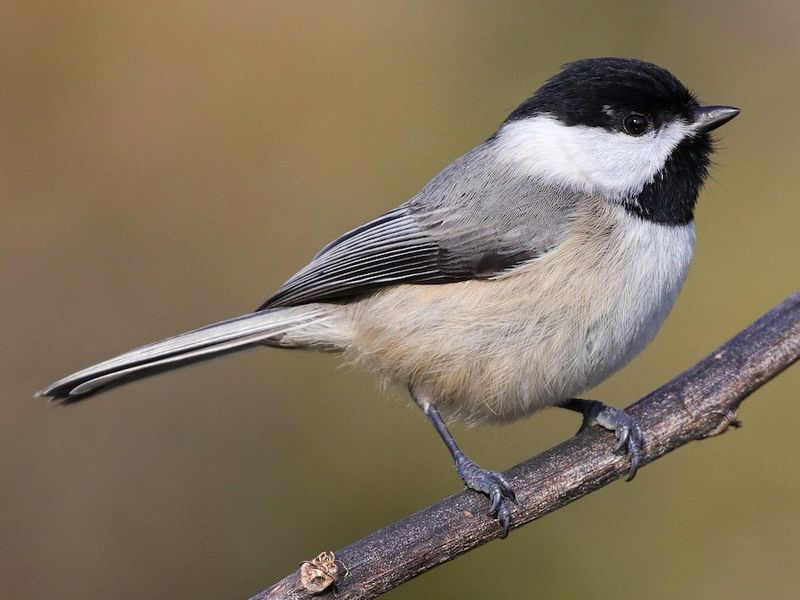
The Carolina Chickadee’s black cap and bib contrasting with its white cheeks create a facial pattern that looks like it was drawn with precise penmanship.
Masters of upside-down feeding, chickadees think nothing of hanging from the flimsiest twig tips to reach seeds or insects. Their short, stubby bills handle sunflower seeds expertly, and they’ll readily visit suet feeders in cooler months.
Carolina Chickadees have remarkable spatial memory, remembering hundreds of food caching locations. They form the core of winter feeding flocks, often leading titmice, nuthatches, and warblers around their territory in search of food.
14. Boat-Tailed Grackle
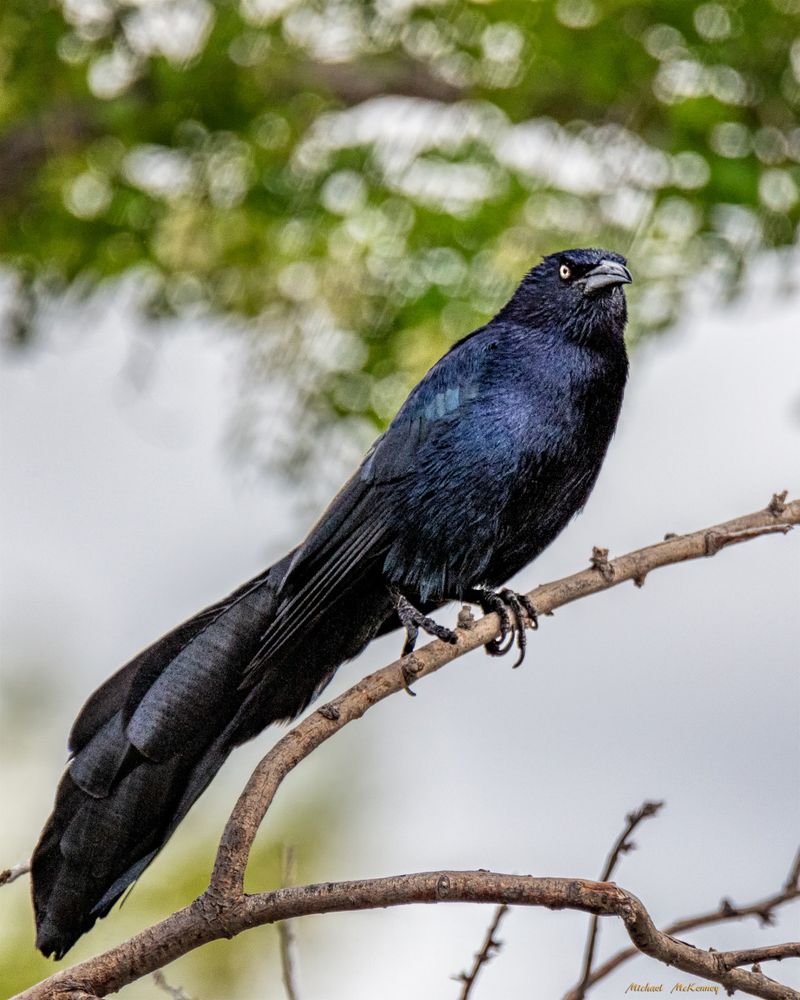
Grackles’ varied vocalizations range from squeaky hinges and rattles to surprisingly musical whistles and gurgles. Large groups gather in coastal areas, marshes, and increasingly in suburban settings throughout Florida.
Boat-tailed Grackles are opportunistic feeders, consuming everything from insects and small vertebrates to seeds and human food scraps. Their intelligence allows them to solve problems creatively, sometimes working together to access food sources or even using tools.
15. American Goldfinch
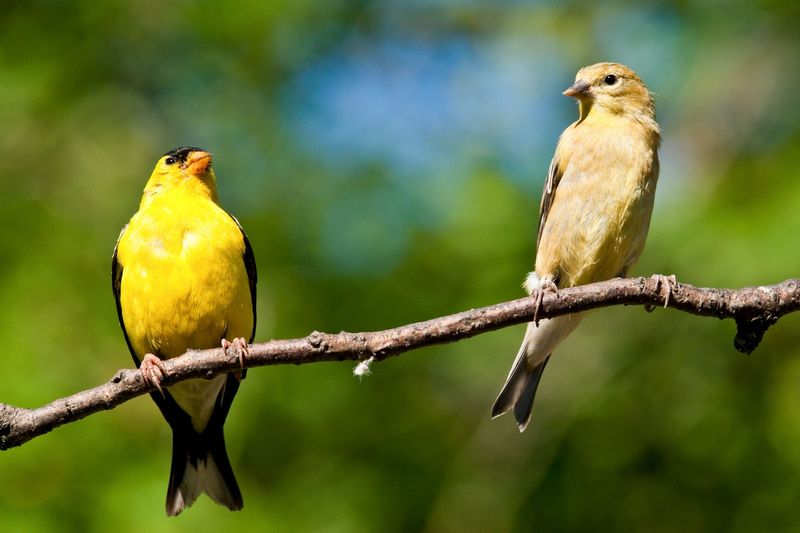
Winter brings a special treat to Florida yards when American Goldfinches arrive in their olive-yellow non-breeding plumage. By late winter, males begin transforming into the brilliant lemon-yellow with black caps and wings that make them look like flying sunshine.
Their bouncy flight pattern and sweet, canary-like songs make identification easier even before you spot their colors. These small finches travel in tight-knit flocks, descending on thistle feeders with cheerful energy and constant chatter.
Unlike many birds, American Goldfinches nest late in summer.
They’re almost exclusively vegetarian.
16. House Finch

Originally western birds, they were introduced to the eastern United States and have become common across Florida, especially in suburban areas.
Their cheerful, warbling song consists of a series of short notes that rise and fall in pitch, often ending with an upward slurred note. House Finches are highly social, forming loose flocks that move between feeding areas throughout the day.
These adaptable birds readily nest on human structures, from porch lights to hanging plants. They primarily eat seeds, showing particular fondness for black oil sunflower seeds at feeders, and also enjoy fruits and some tree buds.
17. Baltimore Oriole
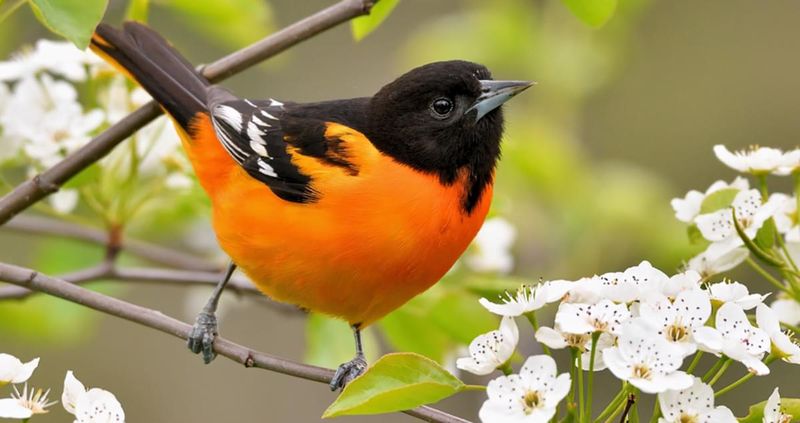
In Florida, they trade their northern breeding grounds for our warmer climate. Males display striking bright orange underparts with black heads and backs, while females show more subdued yellowish-orange plumage with grayish-brown backs.
Unlike many birds, orioles have a sweet tooth! They’re drawn to sugar water feeders similar to hummingbird setups but with larger ports. Orange halves and grape jelly also prove irresistible to these tropical-looking visitors.
Listen for their flute-like whistling songs and chattering calls in mature trees.
18. Downy Woodpecker
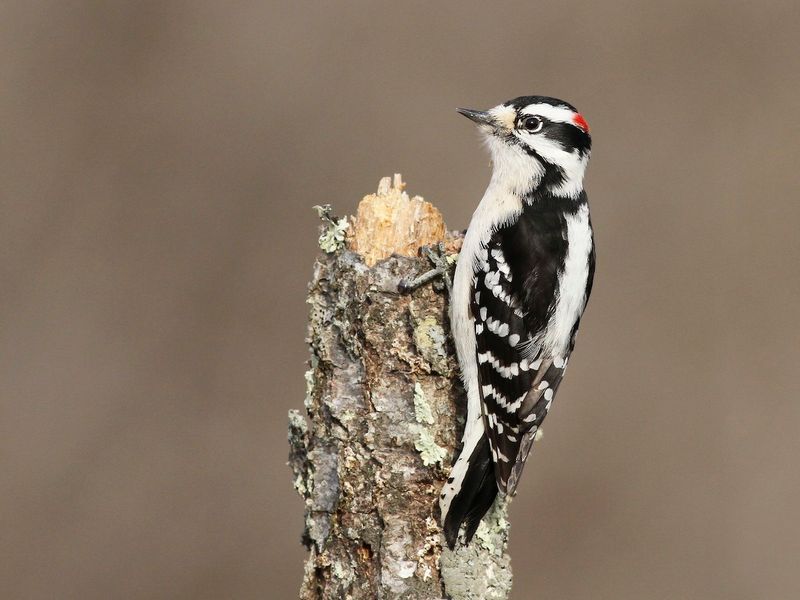
The smallest woodpecker in Florida, the Downy brings outsized personality to backyard bird feeders. These compact birds feature checkered black-and-white patterns with males sporting a small red patch on the back of their heads that females lack.
Their diminutive size allows them to forage on the smallest branches and weed stems that larger woodpeckers can’t access.
Downy Woodpeckers are suet feeder champions, often being the first to discover a new feeding station. They form loose winter flocks with chickadees and nuthatches.
19. Pileated Woodpecker
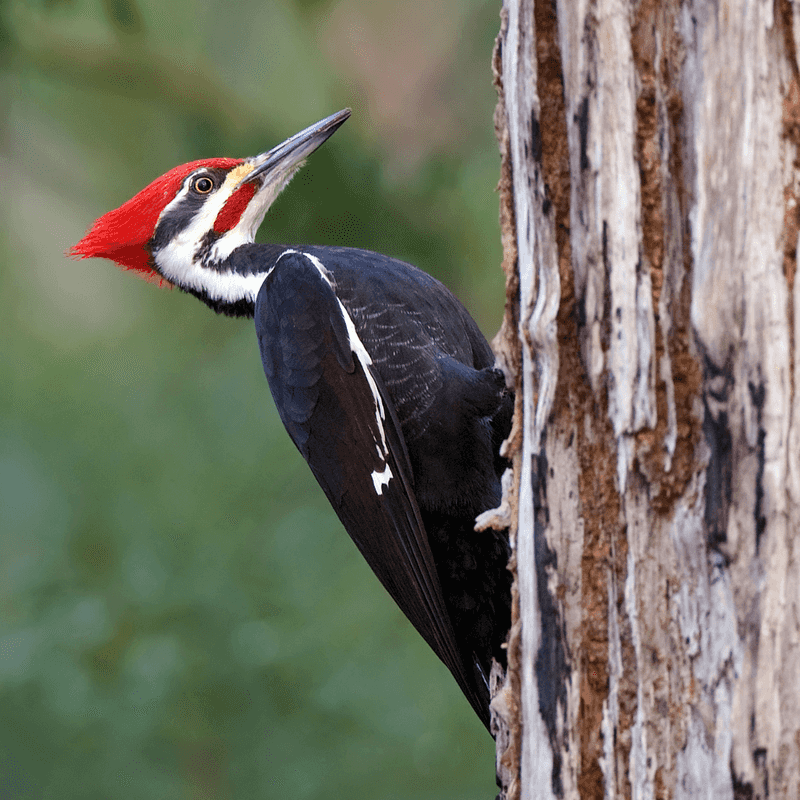
The unmistakable flaming-red crest of the crow-sized Pileated Woodpecker makes it the undisputed king of Florida’s woodpecker world.
These magnificent birds leave distinctive rectangular holes in dead trees as they hunt for carpenter ants and other wood-boring insects.
Surprisingly adaptable, Pileated Woodpeckers have adjusted to suburban environments with sufficient large trees. They occasionally visit suet feeders in yards bordering woodlands, creating an exciting wildlife viewing opportunity for lucky homeowners.
20. Cedar Waxwing
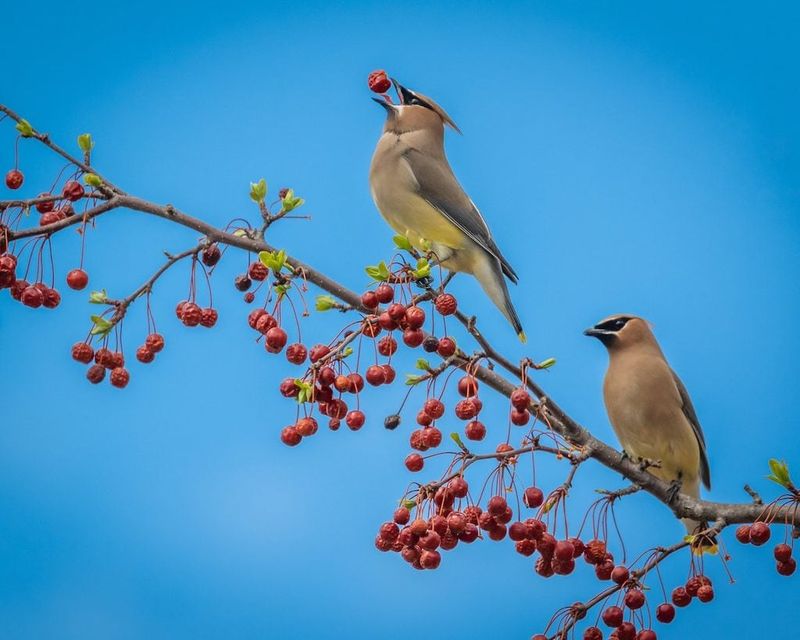
Few birds match the elegance of Cedar Waxwings with their silky, peach-colored plumage, black masks, and waxy red wingtips that give them their name.
These social birds visit Florida in winter, arriving in tight flocks that descend on berry-producing trees and shrubs.
Their high-pitched, thin whistles sound like tiny squeaks as they pass berries down a feeding line, sometimes playing “pass the berry” before someone finally eats it.
Cedar Waxwings are one of the few North American birds that can survive on a diet of just fruit for months. Plant native fruiting trees and shrubs like wax myrtle, holly, and elderberry to attract these beautiful winter visitors to your Florida yard.
21. Purple Martin
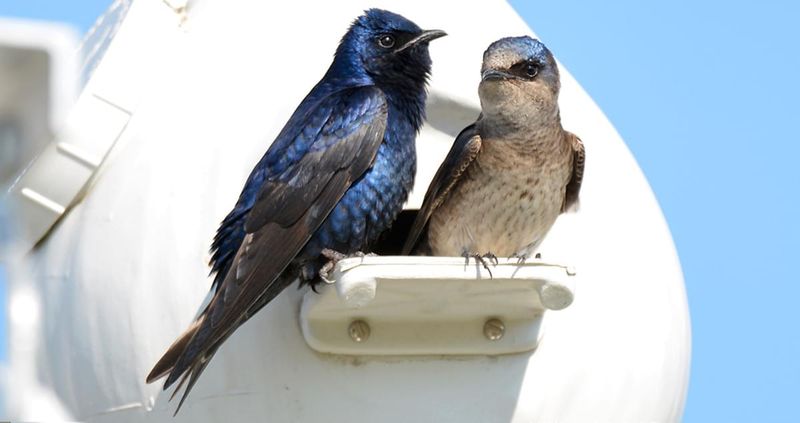
Spring in Florida brings the joyful return of Purple Martins, our largest swallows, as they complete their migration from South America.
These aerial acrobats spend almost their entire day in flight, catching insects on the wing with remarkable agility. Their cheerful, gurgling songs and dawn-to-dusk activity make them welcome guests in Florida backyards.
Purple Martins east of the Rockies now nest almost exclusively in human-provided housing – multi-compartment birdhouses or natural gourd systems. Establish a martin colony by setting up proper housing in open areas at least 40 feet from tall trees.
22. Loggerhead Shrike

Known as the “butcherbird,” the Loggerhead Shrike combines the appearance of a songbird with the hunting habits of a small hawk.
These gray-backed birds with black masks and white underparts are year-round residents in open Florida habitats with scattered trees and shrubs.
Their most fascinating behavior is impaling prey – from insects to small vertebrates – on thorns or barbed wire, creating natural larders.
Their hooked bills and predatory nature make them unique among backyard birds, though they’re becoming increasingly uncommon due to habitat loss.
23. Cattle Egret
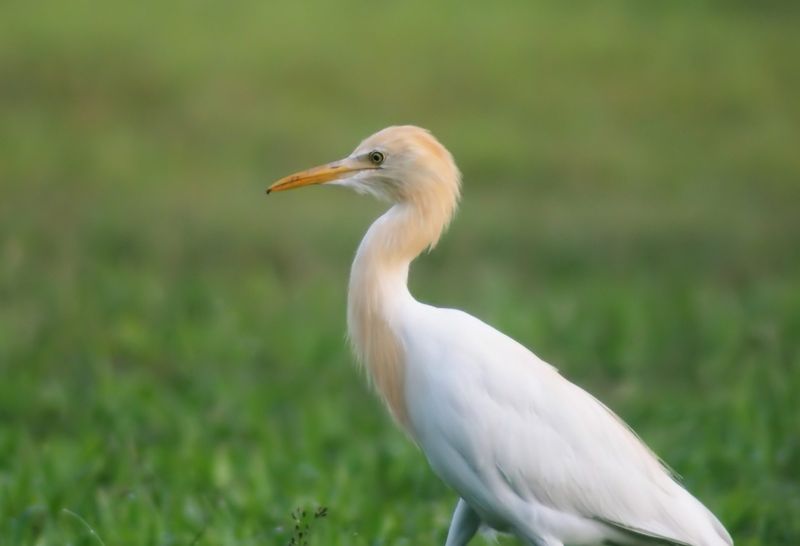
These compact white herons develop buff-orange plumes on their heads, chests, and backs during breeding season, returning to all-white plumage for the rest of the year.
True to their name, they often follow cattle, lawn mowers, or farm equipment to catch disturbed insects. Their short yellow bills and stocky builds help distinguish them from other white herons.
Cattle Egrets form impressive breeding colonies in trees near water, sometimes alongside other wading birds. They’re highly social, roosting in large numbers and often visiting residential areas.
24. Swallow-Tailed Kite
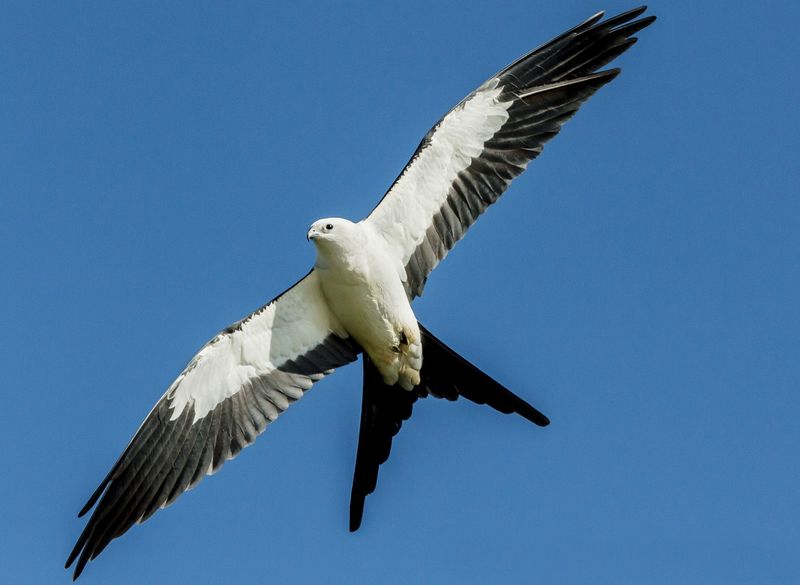
The sight of a Swallow-tailed Kite soaring overhead with its forked tail is one of Florida’s most breathtaking bird experiences.
Summer visitors to Florida, they perform aerial feats that include eating and drinking on the wing. Watch for them snatching dragonflies mid-air or plucking lizards and tree frogs from branches without ever landing.
Swallow-tailed Kites nest in tall pine trees, often in colonies.
Their numbers have declined due to habitat loss, making every sighting special.
25. Great Egret
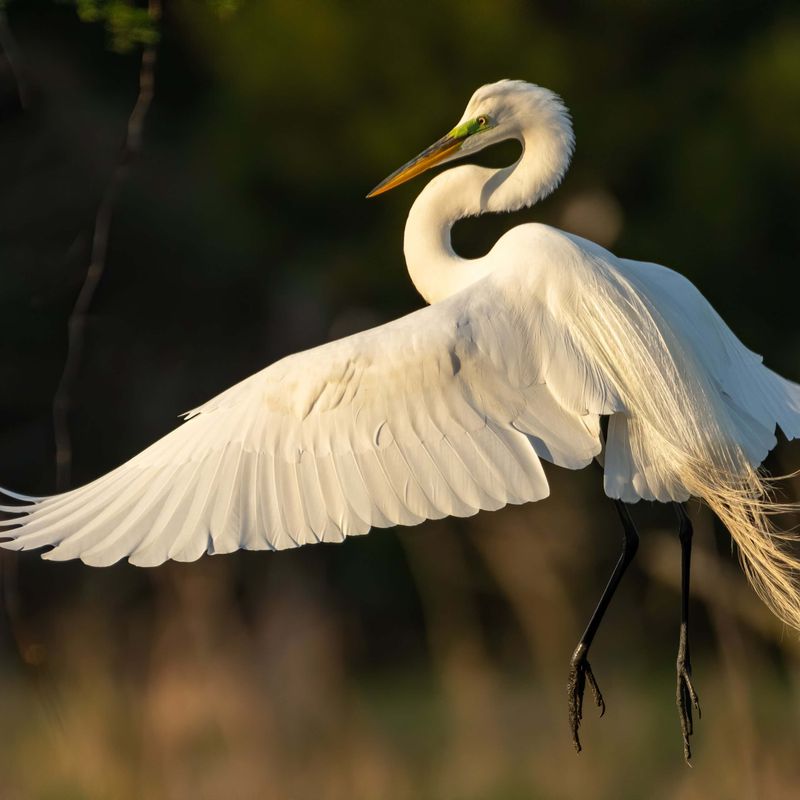
Their white plumage, yellow bill, and black legs create a striking contrast as they patiently stalk fish and other aquatic prey.
During breeding season, these magnificent birds develop long, wispy plumes called aigrettes that cascade down their backs. Historically, these decorative feathers nearly led to their extinction when they were harvested for women’s hats in the early 20th century.
Great Egrets employ a hunting technique of standing motionless before striking with lightning speed. They’re commonly seen in Florida neighborhoods with water features, sometimes becoming surprisingly tolerant of human activity.
26. Snowy Egret
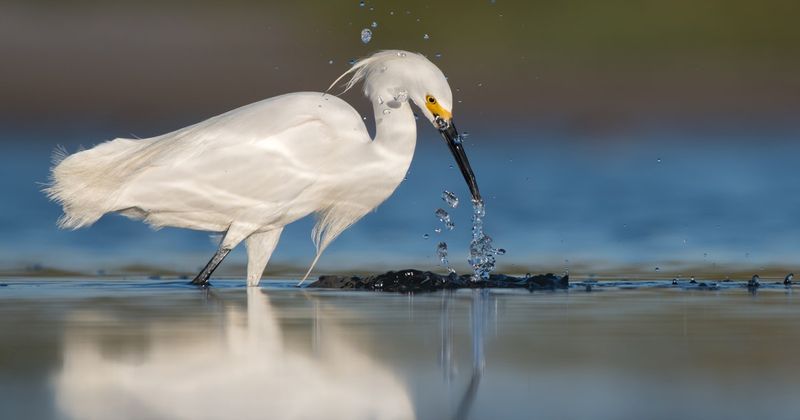
The Snowy Egret dances across Florida waterways on distinctive yellow feet that contrast dramatically with their black legs – creating the appearance of wearing golden slippers.
During breeding season, they develop magnificent plumes on their heads, necks, and backs that they display during elaborate courtship rituals.
Snowy Egrets readily adapt to human-altered wetlands, including golf course ponds and backyard water features. Their recovery from near-extinction due to the plume trade represents one of America’s earliest conservation success stories.
27. Roseate Spoonbill
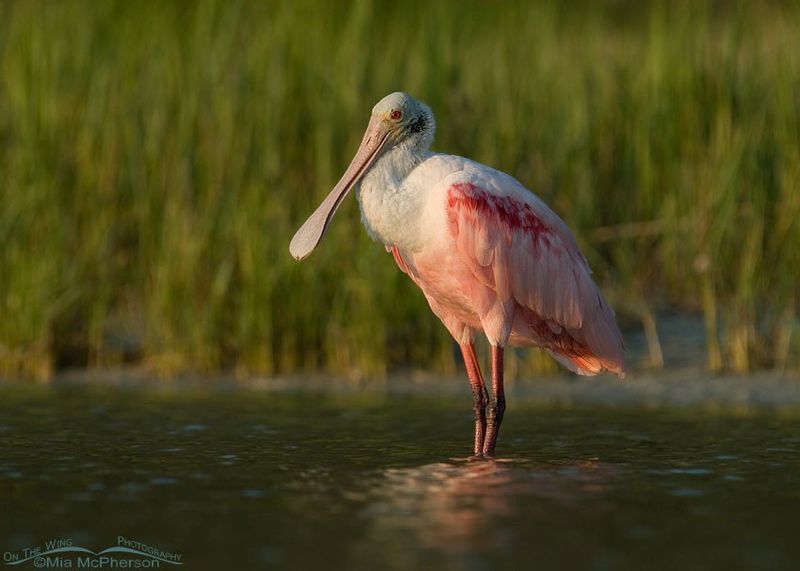
With their pink flamingo-like coloration and distinctive spoon-shaped bills, Roseate Spoonbills create unforgettable impressions when they visit Florida wetlands and coastal areas.
Their rosy plumage intensifies with age and diet, ranging from pale pink in younger birds to vibrant magenta in mature adults.
Once rare due to plume hunting, Roseate Spoonbills have made a remarkable comeback in Florida. They’re increasingly spotted in suburban wetlands and retention ponds, bringing their tropical flair to lucky neighborhoods throughout the southern half of the state.
